Decoratively deciduous and flowering perennials for the garden. Ornamental plants for the garden - choose, plant, grow, combine
Gardeners often make the mistake of planting flower beds with monotonous flowers. As a result, the garden looks flat, there are no accents that could attract attention. A garden in which all the plants merge into one bright spot will not please everyone. If you want to make the garden more original and interesting, use ornamental plants that significantly affect the perception of the landscape. Such plants look unusual and are guaranteed to attract attention. In this article, we present a selection of ornamental plants for the garden.
What you need to pay attention to when choosing ornamental plants for the garden
- Remember that most ornamental plants are quite large. This is good, as they will not get lost among other plants. But before buying, it is advisable to take a look at what the plant looks like at the peak of its growth.
- When choosing ornamental plants, be sure to ask about their needs for sunlight, watering, and soil type.
- Do not use too many large ornamental plants. They must become bright accents. And if there are too many ornamental plants, you may not get the desired effect.
- Do not forget to make timely pruning, removal of damaged and dead leaves and branches.
Ornamental plants include many species, from palms and cacti to stonecrops and a wide variety of tropical plants.
Advice: When choosing ornamental plants, keep in mind the climate zone in which you live. Tropical plants are unlikely to thrive in cold climates.
Some types of ornamental plants for the garden
Yucca
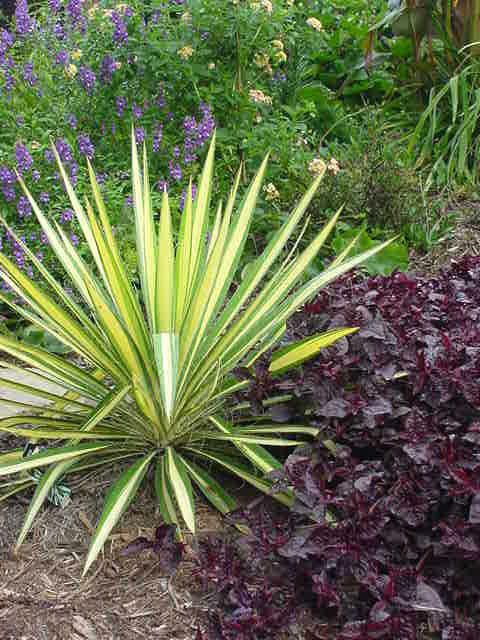
Yucca is an evergreen ornamental plant with tough leaves resembling thorns. The beauty of yucca is its unpretentiousness and resistance to cold. It is also nice that such an ornamental plant will delight you with greenery in winter. Yucca is especially beautiful during the flowering period. In the center of the bush appears a branch with clusters of flowers up to two meters high. Flowering begins in June and lasts for several weeks. Yucca leaves can be green, red, spotted. Yucca does well in soil with good drainage and loves sunlight. Yucca is a drought tolerant plant.
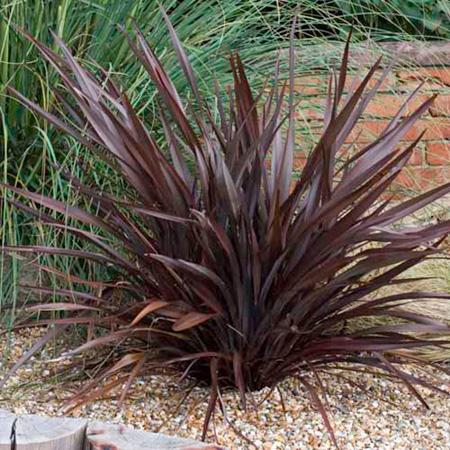
New Zealand spinning flax is somewhat similar to yucca, it also has long narrow leaves. True, they are softer. New Zealand spinning flax can grow as a perennial or as an annual. Everything depends on the climate. New Zealand flax leaves can be green or red. In a warm climate, the length of the leaves of this plant can reach 3 meters. New Zealand flax can be grown in open field and in pots.
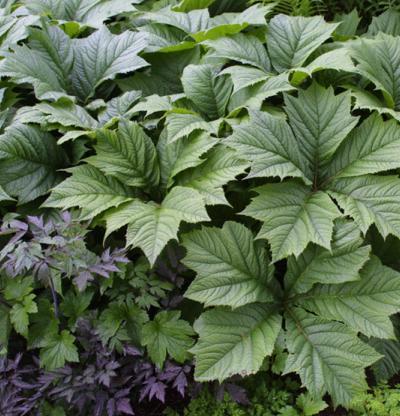
Rogersia is a large, tropical-like plant. Rogersia can grow up to 1-2 meters in height and the same size in width. This plant does well in partially shaded areas of the garden, Rogersia needs a lot of moisture, protection from wind and scorching sun.

There are many types of ornamental grasses. Among the most popular are reed grass and miscanthus.

The taro is sometimes also called the elephant's ear. The name of the plant was due to the huge leaves. The height of this plant can reach 2.5 meters. Taro is an excellent choice for partially shaded areas. This plant does well with plenty of water and well-fertilized soil. Requires protection from the scorching sun.
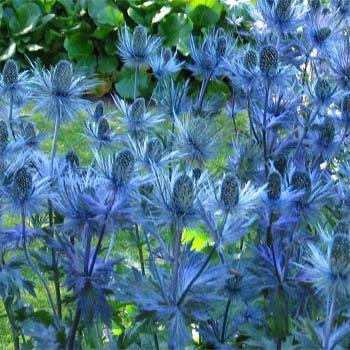
The eryngium is a very beautiful ornamental plant that is great for sun-drenched areas. The plant tolerates drought well, it practically does not need to be looked after. The eryngium has blue flowers that appear in the middle of summer.
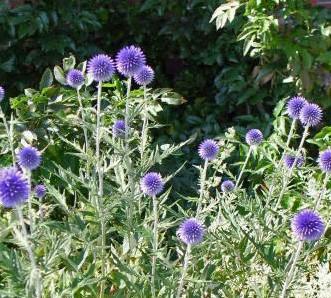
Another plant with blue flowers in the form of balls. Something like a blueberry. Blooms from mid to late summer.
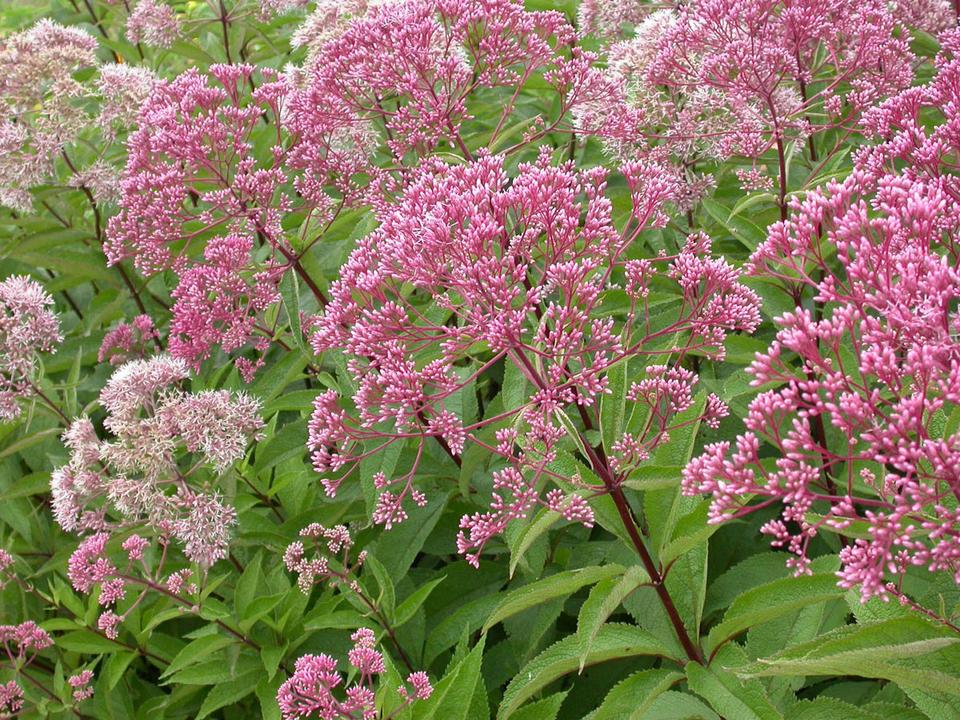
Stubble is a perennial plant that reaches a height and width of about 2-2.5 meters. Blossoms bloom at the end of summer. Its inflorescences are large and flat, reminiscent of bright plates or umbrellas. Flower color purple. There are also dwarf cultivars. This plant needs a lot of sun, the soil must be sufficiently moist. In early spring, you need to trim the window sill.
Horsetail (horsetail)

This plant appeared in prehistoric times. Horsetail is a water-loving plant that can grow even in swampy soils. The ponytail loves the sun, but does well in partially shaded areas. When grown in temperate climates, this plant remains evergreen. Grows quickly up to a metre. Horsetail grows quickly, so it is best to grow it in pots.
Every garden is different. Plants help to achieve such diversity and exclusivity - a huge range of varieties and species, original flower arrangements give each suburban area its own character, unique shade and aroma.
All plants for the garden are divided into two categories:
- fruit;
- decorative.
The basis of the group of ornamental plants are trees, shrubs and flowers that adorn the entire space of the garden. It is believed that it is these plants that can affect the soul and body of a person.
Trees and shrubs are the skeleton of the garden, the main architectural component. With their help, you can transform any space, divide the site into zones, decorate an unsightly corner or highlight a secluded place to relax. Large plants perform a protective function - they protect the garden from winds and unfriendly glances.
All trees and shrubs are divided into two categories:
- evergreen;
- deciduous.
evergreens
Considering the peculiarities of our climatic zone, coniferous species are evergreens for our garden.
The main feature of this category is appearance leaves. Coniferous plants are covered with needles or needles. These decorative beauties become a real decoration of the garden in the autumn and winter periods, when other inhabitants of the garden lose their attractiveness. Coniferous specimens are very unpretentious in their care, which is very important in the conditions of the insane speed of modern life.
Features of conifers
Why coniferous plants always stay green? The process of changing needles occurs gradually. However, among the representatives of conifers there are those who shed their needles for the winter - larch.
As a rule, coniferous representatives are tall trees such as fir or spruce. There are also varieties in the form ground cover and creeping shrubs, for example, plastic.
Another feature of evergreens is phytoncides - special substances that these decorative specimens emit, thereby cleaning and disinfecting the air.
Garden decoration with conifers
Coniferous specimens can be used not only to transform the garden. This is a great planting option. hedge, creating certain zones on the site.
To such evergreen, hardy beauties shadow is not scary. Junipers, pines, thujas will grow well in a shady area, and in combination with heather species, very decorative compositions will be obtained.
It is the varieties that gardeners call universal, as they surprisingly harmoniously fit into any style. landscape design.
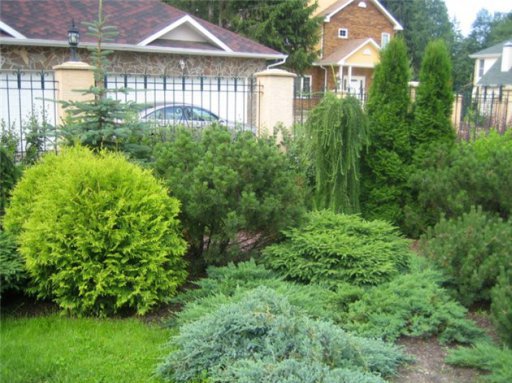
Choosing a place for conifers
When choosing a place for evergreen specimens, give preference to shady areas that are reliably protected from the wind.
All conifers prefer a large number of moisture and require good drainage.
As for wintering, many conifers tolerate cold better if they are planted group. If you plan to plant a single conifer tree, choose a frost-resistant variety, such as pine or larch.
When planting, it is important not to bury the root neck of the plant in the soil, but to leave it at a height of a few centimeters from the ground.
As for the composition of the soil, it all depends on the variety of evergreen tree or shrub you choose.
The optimal period for planting conifers- spring or autumn. It is important to avoid very hot and dry days.
Evergreens love high humidity, so shower them regularly.
So that the conifers become a real decoration of the garden and do not die in the new conditions, it is better to purchase them in special nurseries, where all specimens have gone through a period of adaptation.
Reliable protection against winter cold for evergreen varieties will be abundant watering in late autumn. You will also need to carefully tie the trunk and crown or build a special frame and cover the young shoots with non-woven material, spruce branches or straw.
deciduous plants
If we talk about the number of varieties and species, then decorative deciduous trees and shrubs are significantly superior in their diversity to coniferous representatives of the garden. It is the deciduous specimens of trees and shrubs that are the most decorative and this exoticism manifests itself throughout the year, when the shade of the foliage changes depending on the season. You can decorate your countryside with plants with yellow, red, silver and even variegated foliage. In addition, thanks to the work of breeders, many varieties of deciduous specimens are decorated with carved leaves, the original shape of the crown.
A frequent guest of the garden - barberry
Barberry is one of the most decorative and popular shrubs in the modern garden. To date, scientists have recorded more than 170 varieties of this plant. Thunberg's barberry is rightfully considered the main one.
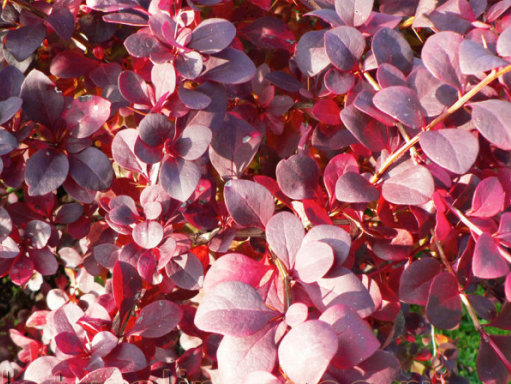
Why is this species given so much attention? This is due to the undeniable advantages of the shrub.
- Barberry is the most ornamental shrub among horticultural crops.
- The bush is resistant to various pests and diseases, in particular, to rust and powdery mildew.
- Barberry Thunberg is a record holder among other shrubs in terms of the number and variety of varieties.
- Barberry is resistant to winter frosts. Despite the fact that among this species there are varieties that require additional warming for the period of cold weather, with proper care, not a single shrub will die even in the most severe frosts.
This type of shrub is notable for the original shape and color of the leaves. The crown of the plant can be green, yellow, purple and variegated. The barberry looks most attractive in autumn.
exotic beauty care
Barberry feels most comfortable in the bright, open sun, but in a site completely protected from winds and drafts.
The soil should be as light and well-drained as possible. If the soil on your site does not meet the desired, it is better to prepare the soil yourself. The substrate should fill a hole with a diameter of approximately half a meter.
Considering that the barberry belongs to drought-resistant plants, abundant watering and excessive humidity can destroy the bush. The plant does well with natural precipitation, and additional watering is necessary during a period of prolonged drought. For glaze it is necessary to use warm water and prevent water from getting on the crown of the bush. After that, you should definitely loosen the soil.
top dressing needed once a year, in the spring. As a fertilizer, it is good to use humus or compost.
autumn barberry mulch with peat.
pruning necessary in the case when the branches of the shrub freeze slightly in winter. In this case, the damaged shoots are cut off in the spring.
Decorative flowers in the garden
The brightest, most unusual inhabitants of the garden are undoubtedly flowers, although they are not the basis of the territory, but without them, any, even the most picturesque suburban area loses its decorative effect. Flowers are, in a way, the final chord in decorating a garden, an important detail that fills the atmosphere with color and aroma. Only flowers can turn a garden into a dynamic picture that is constantly changing, transforming, but never fading.
All flowers are divided into two categories:
- annuals or annuals that delight with their flowering in spring, summer, and die in autumn;
- perennial varieties that are reborn in the spring, as their root system hibernates in the ground, is gaining strength.
Allium - fluffy ball in the garden
Decorative onions are juicy, fluffy balls that are the "highlight" of the garden, delighting with a variety of shades. For over three hundred years, landscape designers have used allium to create flower arrangements in a wide variety of gardens. Few people know that a decorative onion, along with its garden counterpart, is a tasty and healthy ingredient for a salad. Allium also performs a protective function on the site, repelling pests.
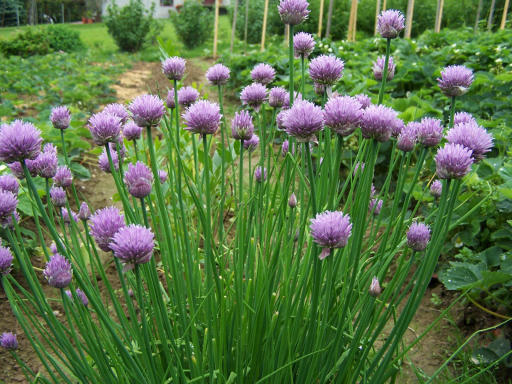
The leaves of allium are basal and linear, the inflorescences are small, collected in large balls, the diameter of which can reach 25 centimeters. Onions begin to bloom in late spring, forming inflorescences throughout the first half of summer. Some varieties bloom in autumn. Thus, onions can brighten up your garden throughout the season.
Decorative bow - unpretentious flower
In care, the onion manifests itself as an unpretentious flower that does not require special attention. An important condition for its cultivation is permeable soil. If the water stagnates in the hole, the allium will die. The soil should be light, with a small amount of sand, acidity from 6.5 to 7.5 pH.
As for lighting, the onion feels great in the open sun and partial shade. However, the decorative features of allium depend on the degree of illumination. How more sun will fall on the onion, the brighter and more attractive the inflorescence will turn out.
Onions easily tolerate drought, but are not very resistant to frost.
The flower reproduces well by seeds, dividing the bulbs. Bulbs should be planted in autumn when the weather is cool.
A decorative bow is used in border design to create multi-tiered flower beds.
If you have Vacation home or a cottage where there is a small garden, then you will definitely want to somehow decorate it. Ornamental plants, especially climbing ones, can just become a wonderful decoration of a garden plot.
Climbing plants for the garden are divided into two types: annuals and perennials.
Climbing ornamental plants for the garden
Using ornamental plants, you can decorate unattractive walls of buildings, hide stumps or old trees. Having planted climbing plants in the country, you can cover the old fence by dressing it in a beautiful “blanket” of flowers and foliage.
Lianas and their varieties
Creepers during flowering are very beautiful, besides they are also practical. Wrapping around various trellises and arbors, they serve as a non-standard screen covering secluded places from the scorching rays of the sun and gusts of wind. Growing rapidly, creepers become a living barrier that protects your yard from street dust, making it environmentally friendly.
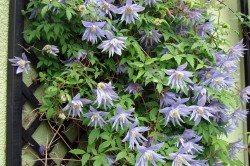
Creepers come in various heights and densities, blooming and not, and their main advantage is that they can be given any shape.
With the help of climbing ornamental plants, you can make a beautiful alley from the gate to the door of the house, along which it will be pleasant for both the owners of the house and their guests. A gazebo entwined with greenery will look fabulously beautiful. Decorating the structure, openwork foliage in the summer heat will keep the gazebo cool.
To decorate flower beds in the garden or on suburban area annual climbing plants are good, for example, azarina, kobeya. Curly flowers look pretty attractive hanging from homemade hanging planters. They often decorate verandas, loggias, balconies.
When planting climbing ornamental plants, it is better to choose varieties that do not require special care. These include morning glory annuals and sweet peas. They are considered the most picky.
During the season, these plants are able to reach three meters in height. Ipomoea stems are densely decorated with gramophone flowers, and sweet peas - with original "dogs" with an exquisite aroma. They are unpretentious, can tolerate slight shading, bloom profusely until late autumn.

Campsis is the same undemanding climbing plant. His small seedling in a few years becomes a luxurious five-meter-high liana, decorated with orange gramophones.
But perennials lemongrass and actinidia are more demanding. They annually form new whips, slowly increasing the green curly veil. Lemongrass has beautiful leaves and white-cream flowers with a pleasant smell. Reminds me of a vine. Its shoots grow up to 15 m long.
Young shoots of actinidia creepers grow up to 3.5 m per season, and old shoots of the plant - no more than 8 m. Both lemongrass and actinidia are not only outwardly beautiful, but also have useful and tasty fruits.
Climbing roses and clematis
Climbing roses, clematis, wisteria are attractive in their own way. But these plants need more care and are more capricious.
For example, clematis grows well if its aerial part is on a support and is sufficiently illuminated by the sun, and the ground around the root is in the shade. In addition, clematis does not tolerate frost - for the winter it must be cut and covered with leaves. But this plant will delight you with its lush flowering until the end of autumn. There are many types of clematis, which differ in shape, size and tones of flowers.
Climbing roses can be a good decoration of the garden.

They will charm anyone with beautiful flowers and aroma. Climbing roses are used to decorate fences, various arches, columns. Varieties of roses are diverse (with different shoot lengths, flower shapes and sizes). They are divided into ramblers and climbings.
Ramblers - roses with very thin lashes, well curly shoots, bloom in early summer, once, have beautiful shiny leaves. They tolerate frost well, are resistant to diseases, can grow in partial shade, but it is better to plant them in lighted areas. Flowers are formed mainly on last year's shoots. Climings bloom from the base of the bush to its very top, so they are preferable for garden decor, more profitable than ramblers.
The wisteria plant is not frost-resistant, as it was imported from southern countries, but some varieties can tolerate sub-zero temperatures (down to -21 ° C). The plant is very beautiful, today it is an adornment of many cottages.
Climbing plants without flowers
There are climbing plants without luxurious flowers, but pleasing to the eye with beautiful leaves of an unusual shape, for example, ivy. An undemanding plant forms dense greenery on various vertical planes, strengthening on them with sucker roots. Ivy - evergreen, looks very beautiful throughout the year, being a backdrop for flowers in flowerbeds in summer, and decorating a snow-covered garden in winter.

Wild grapes can be a good outfit for old walls. Clinging to the walls, like ivy, with the help of sucker roots, it practically sticks into the surface of buildings. The most common Japanese and girlish grapes. Their foliage, covering the walls with a solid blanket, changes its color from dark green to burgundy in autumn, giving any buildings a new, more spectacular look.
Ornamental grasses have also become a modern element of landscape design. Hardy and fast growing, they blend well with other plants. Having bright foliage, they are always attractive, but are most beautiful in early autumn. They retain their elegance all winter, steadfastly resisting weather conditions.
Ornamental grasses are easy to grow. Some of them like open, sunny places, but most herbs can withstand both drought and waterlogging. Cleaning areas with ornamental grasses should be done in early spring, removing old yellowed leaves and last year's flower stalks.
ornamental shrubs
Surprisingly undemanding shrub of the Rosaceae family - spirea. Looks very elegant. You can pick up spirea shrubs in such a way that they will decorate the garden with their flowering for more than two months. Some varieties of spirea also have beautiful leaves. Spirea is picky, not afraid of frost, blooms for a long time and luxuriantly, grows rapidly. It can be used as a hedge or border. The plant can grow both in partial shade and in the sun, it is undemanding to soils, almost does not need care.
The wonderful aroma of garden jasmine (another name is mock orange) is well known to everyone. During the flowering period of jasmine, you simply do not want to leave the garden. There are many species and varieties of this plant, differing in the shape of flowers, aroma, size of bushes and flowering time. Jasmine is good because it blooms violently, has a delicate aroma, is not afraid of frost, and is resistant to pests and diseases. It is desirable to plant on the sunny side, but it can also grow in partial shade. The soil should be fertile, moist, but without stagnant water.
Viburnum (a beautiful plant with medicinal berries) can decorate the garden. There are more than 200 species of this shrub, there are even evergreen ones. There are also simply decorative species that form inedible fruits, but with beautiful foliage. Most often there is a viburnum ordinary with useful medicinal fruits. She is not afraid of frost, unpretentious, able to grow in the shade, elegant. But common viburnum is often affected by pests, so it must be treated with special preparations. However, there are varieties of viburnum that can grow in any conditions, they grow well on moist soils without stagnant water.
Everyone knows about the benefits of rose hips. Yes, and his flowers are beautiful, in appearance no worse than roses. These shrubs can be planted in the form of a hedge, and in the fall - to collect fruits rich in vitamin C. Rosehip is good because it is picky, tolerates pruning and transplanting, and grows rapidly. It is desirable to plant it in an open, well-lit place, but it can also grow in partial shade, between trees. He needs almost no care.
It is hard to imagine a garden without lilacs. There are many varieties and hybrids of lilac, even low-growing varieties (only 2-3 m tall) have been bred. Lilac is unpretentious, frost-resistant, during flowering it is very beautiful. Often this plant is planted in a row near the fences, but even a lone bush will decorate any garden with its presence. It is necessary to plant lilacs in sunlit areas. The fertility of the soil does not matter, but the plant does not like wetlands. Care consists in the timely pruning of wilted inflorescences, then the next year the plant will bloom more magnificently.
So, now you have an idea about ornamental plants. Which one to choose for your garden is up to you.



